Continuing our run-through of areas relating to the color temperature of lighting, today we’re going to look at gels. Lighting gels can add a variety of creative flair to your lighting, such as taking a daylight-balanced light and making the light look like the pink glow similar to that of an evening sky. Or quite simply, a gel can be used to correct the color temperature to that of another light source. From 3200k tungsten to 5600k daylight, for example.
If you load up a gel directory, you may be initially overwhelmed with the sheer number of gels available to order. And rightly so, there are hundreds. There are even variations of the same the gel depending on what light source you are using; tungsten vs. tungsten LED, and then those gels can come at different strengths. We’ll save the creative flare for a future article, but today we’re going to cover four gels that should be within your initial purchase. You need two conversion gels and two light modification gels.
With most photography and filmmaking equipment, you can often buy third party and cheaper variations of branded equipment and tools. But, with gels I would suggest purchasing a legitimate branded version. They are calibrated explicitly in their color and engineered to withstand the heat from a hot lamp. The slightest discrepancy in the production of the gel will give you a variety of results.
Recently, I decided to bin the CTB gel that I’ve used for my Arri Fresnel for years. It was crinkled, worn, and honestly? It smelled musty. Therefore, I decided to cut a new square from my recently ordered roll of CTB and replace the battered piece. This wasn’t ordered from a film, photography, or theatre supplier. I purchased from eBay as the seller had an offer for three gels for the price of two. However, although listed as full CTB, and both are blue, the differences between the two gels were very apparent.
CTB
Color Temperature Blue, which is more commonly referred to CTB (as color temperature orange is CTO), is a gel that is used to convert 3200k sources to normal daylight. Tungsten lamps produce the classically warm light situated at 3200 on the Kelvin chart. These lights are great for matching indoor practicals and lighting ambient interiors.
However, when using tungsten lights to mimic daylight or to use with a daylight-balanced light, you will encounter a mismatch in temperatures. This can throw the image off, if there was no intention of mixed color sources. Midday sunlight lands at around 5000-5600k, so you would need to correct your tungsten light source.
CTO
Conversely, CTO does the opposite of CTB. If your primary light source is of daylight temperature and you need to add or mimic the source of tungsten lighting, you would need to add a CTO gel to the light source. It takes daylight and converts it to 3200k. While we would typically think about using CTO gel on a light, this gel is also great to apply to windows to warm natural daylight.
Neutral Density Gels
if you want to reduce the intensity of your light and you’re able to dim the light, you might make dimming the light your first choice of operation. However, dimming an incandescent light source also alters the color temperature.
Neutral density gels, however, leave the color temperature alone but will reduce the overall intensity of the light. Neutral density gels will lessen the light spectrum evenly, and essentially create a less bright version of the light. This means that a neutral density gel won’t turn your hard light source into a soft light source. You will also see a reduction in brightness.
There are many strengths available, ranging from half a stop up to a gel that can reduce four stops of light. Picking up a gel that will reduce the light by at least a stop would be a great addition to your kit.
Neutral density and diffusion gels are sometimes mistaken as the same gel. Both reduce the intensity of light, but both gels inherently do different things.
While you will possibly lose brightness with diffusion gels, they primarily serve to soften hard light. As to what diffusion gel I recommend? Well, unlike CTB or CTO, there are far too many variations to choose from. However, if you jump to the Lee Filters website quickly, you will find a handy slider tool that allows you select what type of diffusion you want. The site will recommend a particular variation
Black Wrap
Cine foil, black wrap, or black foil. There are numerous names for this foil sheet, but it only does one thing; stops the light spill. While not technically a gel, it sits close within the boundaries of light correction tools.



